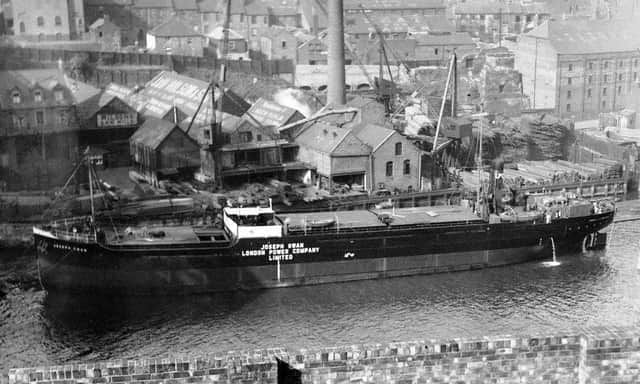The ships named after Sunderland inventor Joseph Swan


Joseph Wilson Swan is renowned as inventor of the electric light bulb and as a pioneer in photography. Born at Pallion Hall in 1828, many his boyhood memories focused upon shipbuilding and other activities on what was then a rural river setting.
Knighted in 1904, Sir Joseph died in 1914.
During the 1930s, SP Austin and Son Ltd won orders from London Power Company to build colliers to serve its newly-constructed Battersea Power Station.
Advertisement
Hide AdAdvertisement
Hide AdSome were upriver or “flatiron” colliers designed to navigate beneath low air draught Thames bridges by lowering their hinged masts and funnel.
They were often named after individuals prominent in the history of electrical engineering.
It was therefore apt for such a vessel to be named after Joseph Swan.
So it was that the 1,571 gross tons steamer Joseph Swan left the ways on July 26, 1938 after being christened by Sir Joseph’s daughter Mary. She was the seventh ship built for London Power by Austin’s and a sister to SS Leonard Pearce, which the day before had undergone acceptance trials.
Advertisement
Hide AdAdvertisement
Hide AdSir Joseph’s son Kenneth R Swan delivered a speech at the launching ceremony, quoting extensively from his father’s memoirs. Other family members present included son Percival and married daughters Mrs Sharp and Mrs Morcom.
Whether by design or accident, the ship’s name had excluded Joseph’s title – an omission which would not be corrected for some years.
With an overall length of 247 feet, she was towed to Sheers Quay, Hudson Dock, for installation of machinery and her triple-expansion steam-reciprocating engine by North Eastern Marine Engineering (1938) Co Ltd.
After final fitting out at SP Austin’s Wear Dockyard, Joseph Swan sailed for Blyth on September 16, 1938, under the management of Stephenson Clarke and Associated Companies, to load her inaugural cargo of coal for London.
Advertisement
Hide AdAdvertisement
Hide AdSadly, she became a wartime loss on September 4, 1940, being torpedoed and sunk by German E-boat S18 during a concerted attack on Convoy FS 271 off the Norfolk Coast. She was carrying coal from Blyth to the Thames at the time. Only one of her crew of 18 survived; many of the victims are believed to be North-Easterners.
On September 6, 1945, a replacement flatiron steam collier was launched for London Power Company from the Aberdeen shipyard of Hall, Russell and Co Ltd. Named Sir Joseph Swan, the ship was similar in design and specification to her predecessor and also operated under Stephenson Clarke management.
She was scrapped at Bremen in 1967, while in ownership of the Central Electricity Generating Board (CECG), successor to the nationalised BEA and CEA.